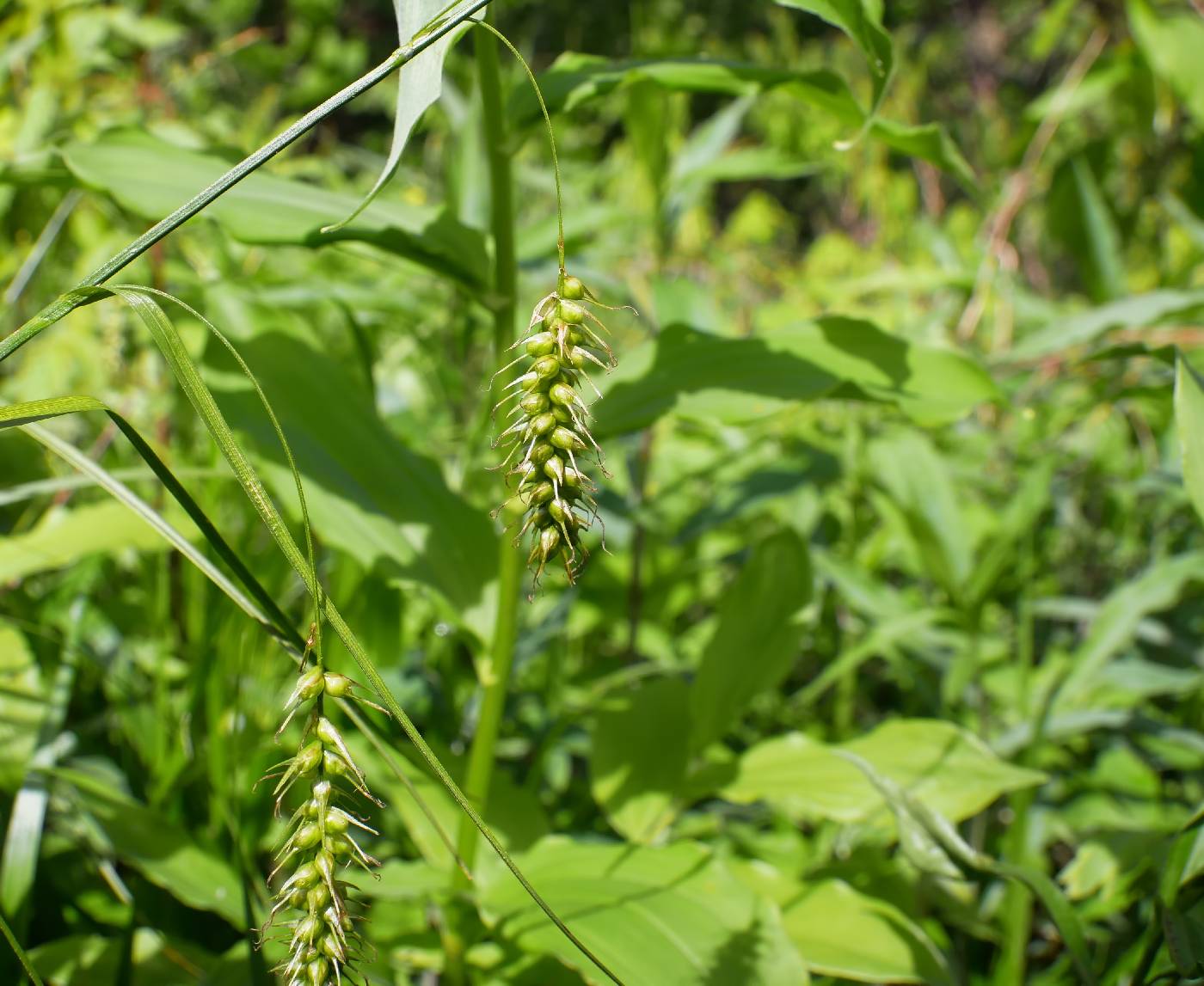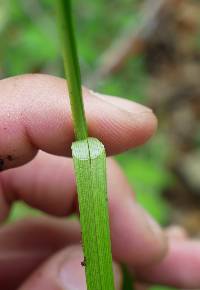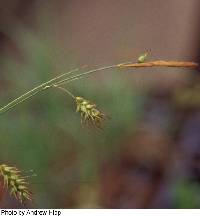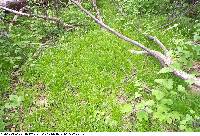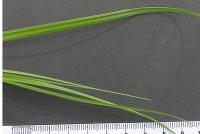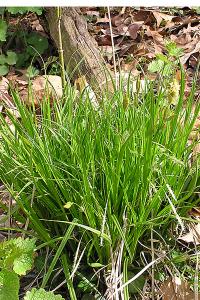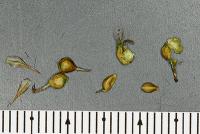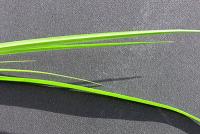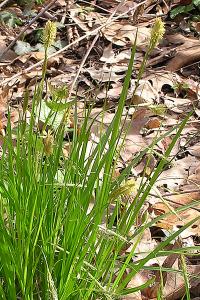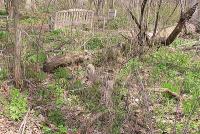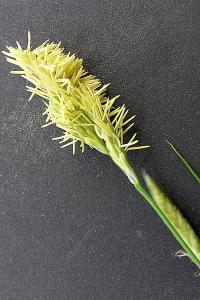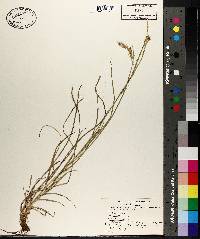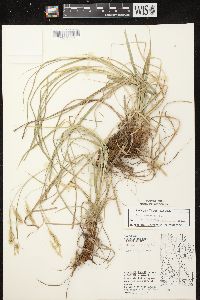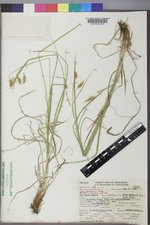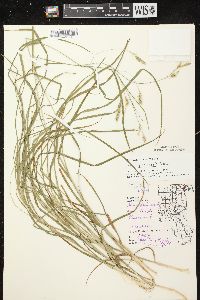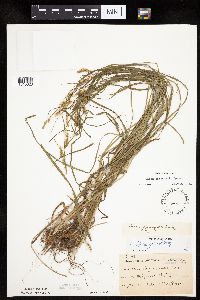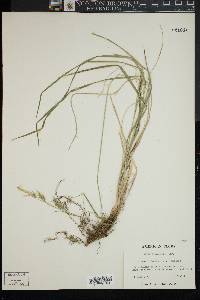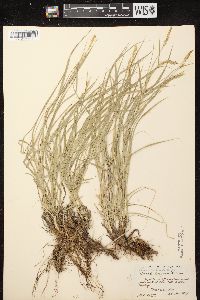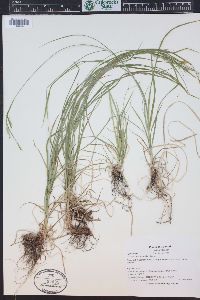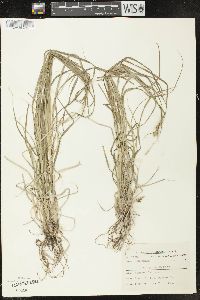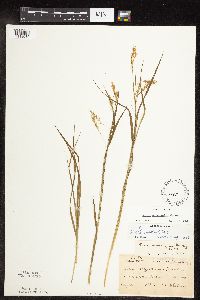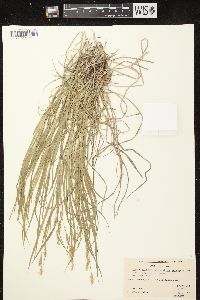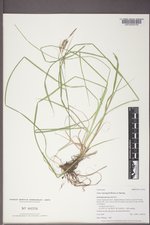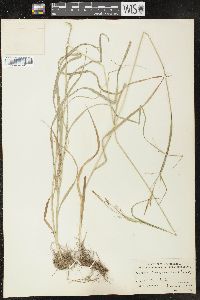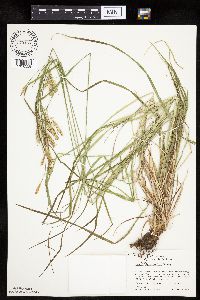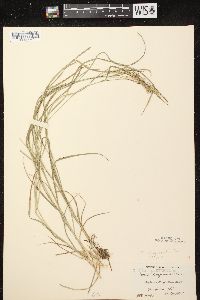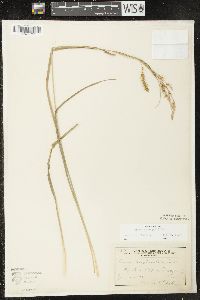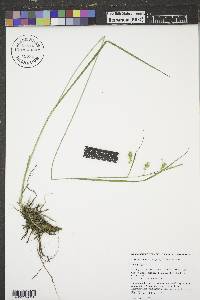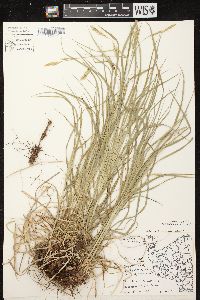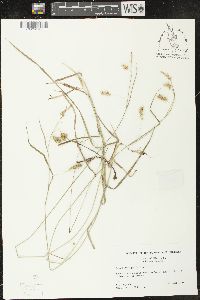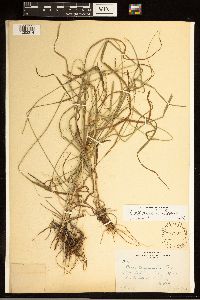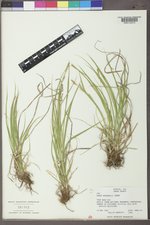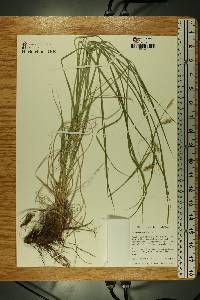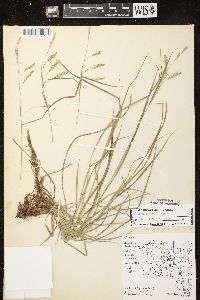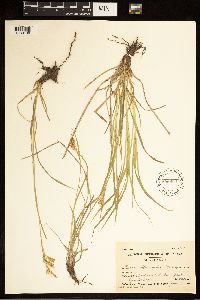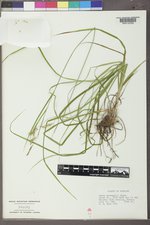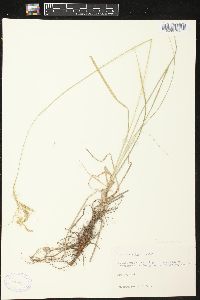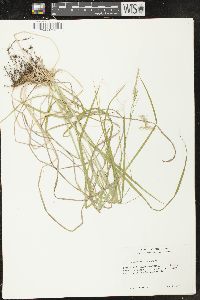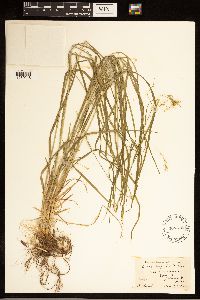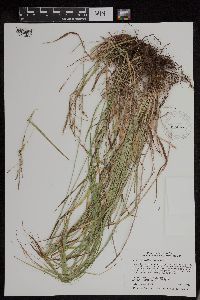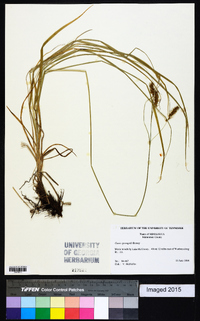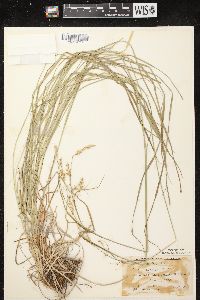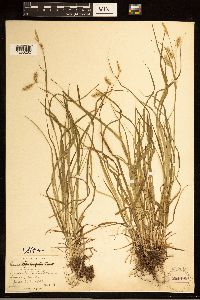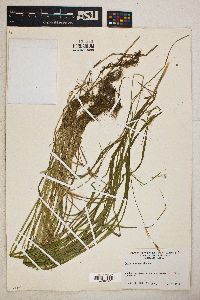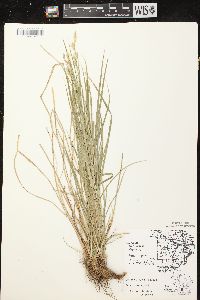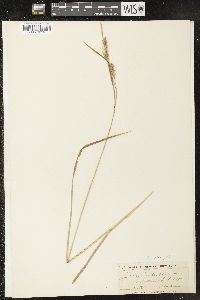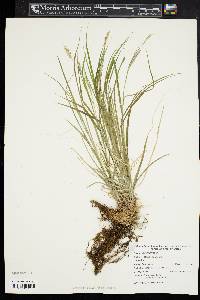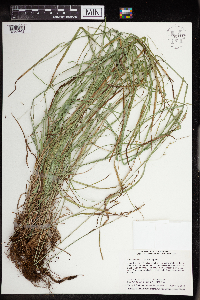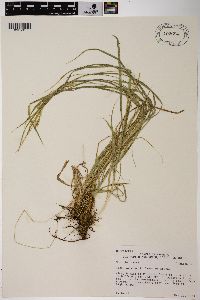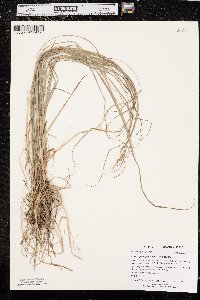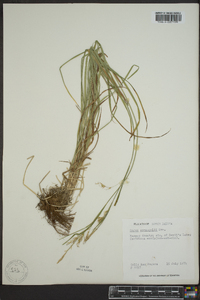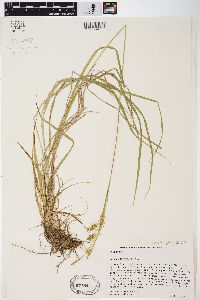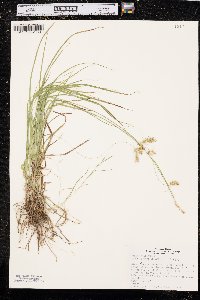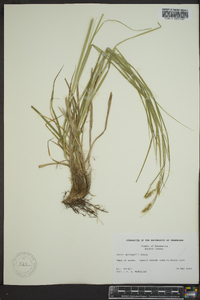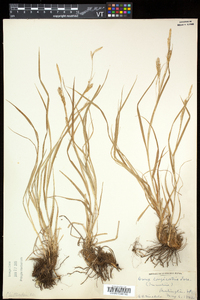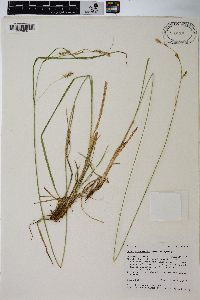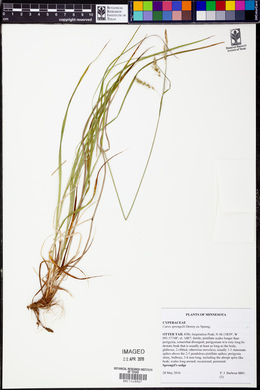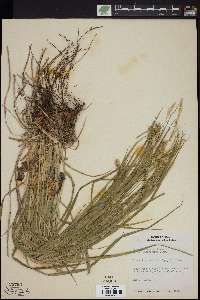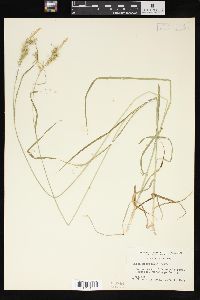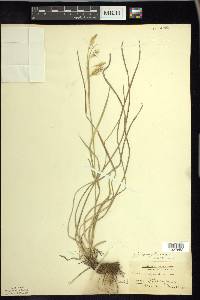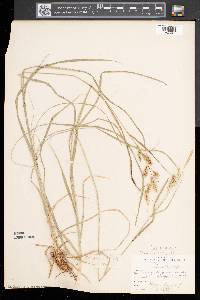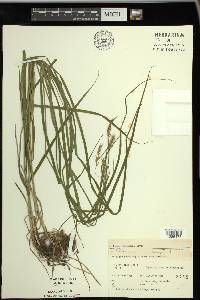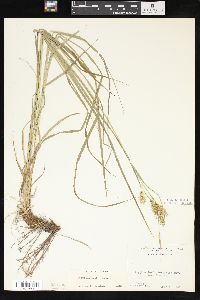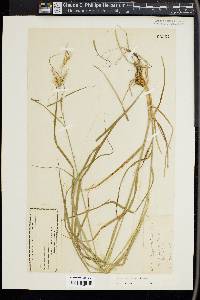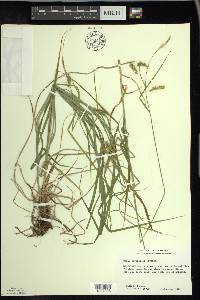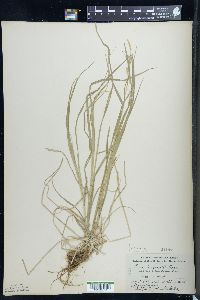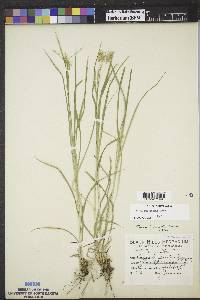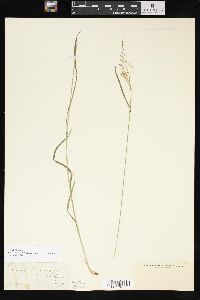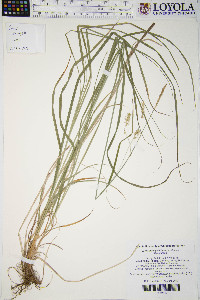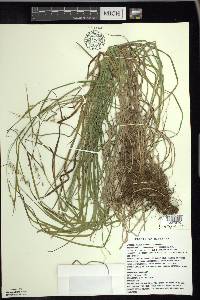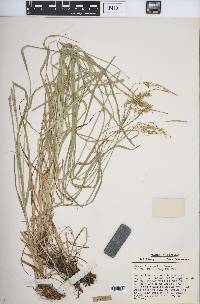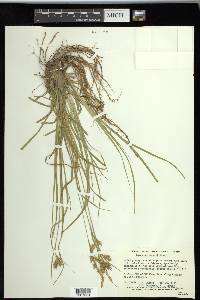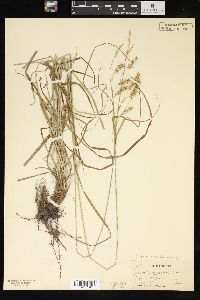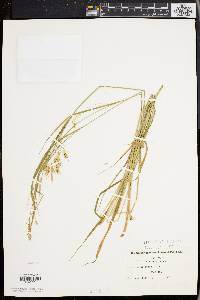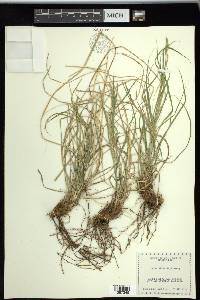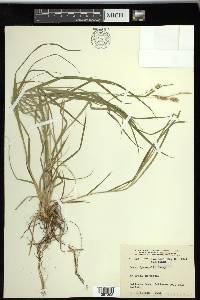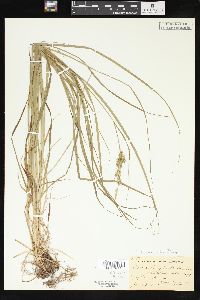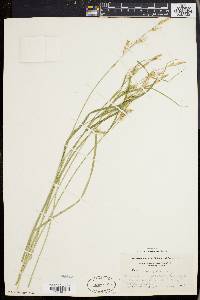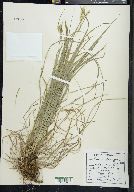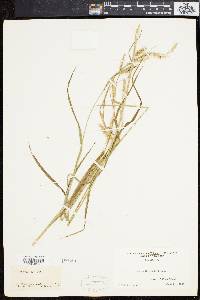
|
|
|
|
Family: Cyperaceae
Long-Beak Sedge
[Carex longirostris var. microcystis] |
Plants with short-creeping rhizomes, loosely cespitose, forming colonies. Culms brown at base, densely covered with brown fibrillose remains of previous year´s leaves; flowering stems 30-90 cm, longer than leaves at maturity, 0.5-0.7 mm thick, glabrous but finely scabrous within inflorescence. Leaves: sheaths glabrous, basal ones tinged with brown and all bearing blades, green to hyaline on back, white-hyaline on front; blades flat, 2.5-4 mm wide, finely scabrous on adaxial surface and margins, glabrous on abaxial surface. Inflorescences: peduncles of lateral spikes slender, 20-60 mm, equaling or somewhat longer than spikes, finely scabrous; peduncle of terminal spike 5-15 mm, scabrous; proximal bracts equaling inflorescences or more often shorter; sheaths 3-5 mm or rarely longer; blades 1-1.5 mm wide. Lateral spikes 4-5, 1 per node; proximal spikes well separated, nodding or drooping at maturity, pistillate with 10-40 perigynia about 1 mm apart, cylindric, 10-35 × 8-10 mm; distal spikes crowded near apex, sessile or nearly so, staminate or androgynous, linear, less than 20 mm. Terminal spike staminate or rarely with a few perigynia at base, 10-20 × 1.5-2 mm. Pistillate scales pale hyaline tinged with chestnut, narrow midrib green, sometimes finely scabrous, ovate-oblong, shorter than mature perigynia, apex long-acuminate, glabrous. Perigynia shiny tan to golden green, 2-ribbed, but otherwise veinless, closely enveloping achene at maturity, ovoid-ellipsoid, 4.5-6.5 × 1.5-2 mm, membranous, base acute, apex abruptly contracted to beak, glabrous; beak bidentate, narrowly tubular, nearly as long as body, finely scabrous on edge, teeth hyaline, 1 mm. Achenes substipitate, 2-2.5 × 1.7-1.8 mm. 2n = 42. Fruiting early to mid summer. Dry to mesic deciduous forests and forest openings, floodplain forests and riverbanks, lakeshores, limestone river bluffs, mixed conifer-hardwood forests, thickets, meadows, roadsides, often associated with calcareous rocks and soils; Alta., B.C., Man., N.B., Ont., Que., Sask.; Colo., Conn., Del., Ill., Ind., Iowa, Maine, Mass., Mich., Minn., Mo., Mont., Nebr., N.H., N.J., N.Y., N.Dak., Pa., S.Dak., Vt., Wis., Wyo. Stems 4-8 dm, clustered on a stout, short or somewhat elongate rhizome that is densely covered with old fibrous lf-remains; lvs cauline as well as basal, elongate, mostly 1.5-4 mm wide; terminal 1 or 2 spikes staminate or with a few basal perigynia, 1-2 cm, the others 2-4, pistillate or the upper with a few distal staminate fls, 1.5-3.5 cm, 10-30-fld, not crowded, at least the lower ones loose to spreading or nodding on long, capillary peduncles; lowest bract with sheathing base 1-10 mm and long, slender blade, the others more reduced and often sheathless; pistillate scales narrow, acute or acuminate, pale, largely scarious or hyaline, often scabrous along the midrib, surpassing the body of the perigynium; perigynia 4.1-7.7 mm, the body broadly ellipsoid or ellipsoid-obovoid, prominently 2-nerved, 2.2-3.8 mm, abruptly contracted to the slender softly bidentate beak 1.7-4 mm; achene trigonous, the persistent style-base commonly contorted; 2n=42. Open woods, meadows, and rocky ledges; N.B. to B.C., s. to N.J., Io., and Colo. (C. longirostris, a preoccupied name) Gleason, Henry A. & Cronquist, Arthur J. 1991. Manual of vascular plants of northeastern United States and adjacent Canada. lxxv + 910 pp. ©The New York Botanical Garden. All rights reserved. Used by permission. From Flora of Indiana (1940) by Charles C. Deam A local species known in the state only from the lake area. The Miami and Noble County stations are in bluegrass sod along roadsides; that of De Kalb County, on a wooded flood plain with beech and black maple; that of Steuben County, a low depression in woods; the Wabash County, the side of "Hanging Rock" on the south bank of the Wabash River, southeast of Lagro; the White County, a moist wooded bottom along the Tippecanoe River, northeast of Buffalo. Its usual habitats, outside Indiana, are rich rocky woods especially in moist depressions, and on crests of calcareous river bluffs or the tops of limestone boulders in open woods. It is often in large colonies where found. ...... Indiana Coefficient of Conservatism: C = 8 Wetland Indicator Status: FAC |
|
|
|
This project was made possible in part by the Institute of Museum and Library Services [MG-70-19-0057-19].
Powered by Symbiota

